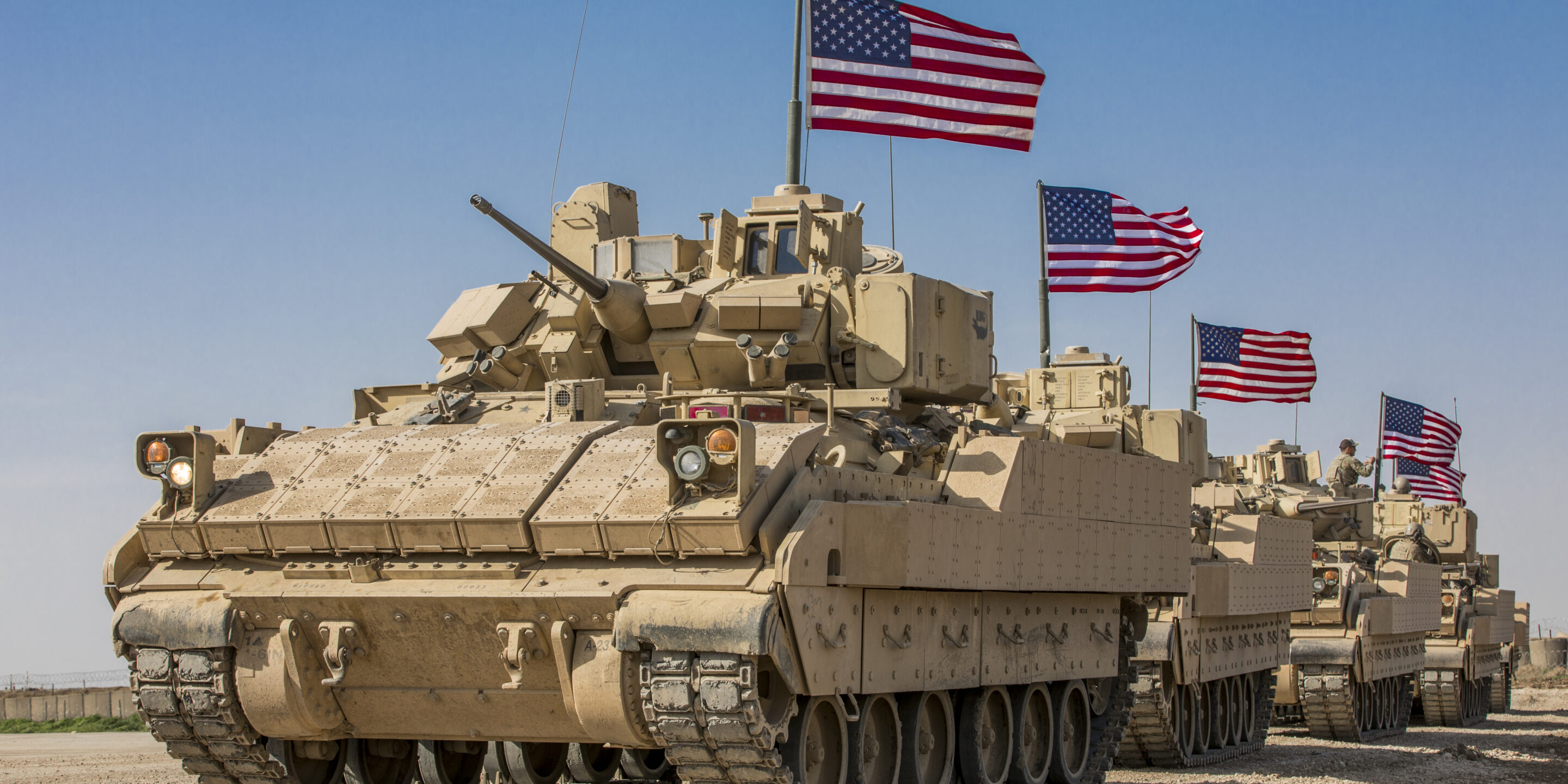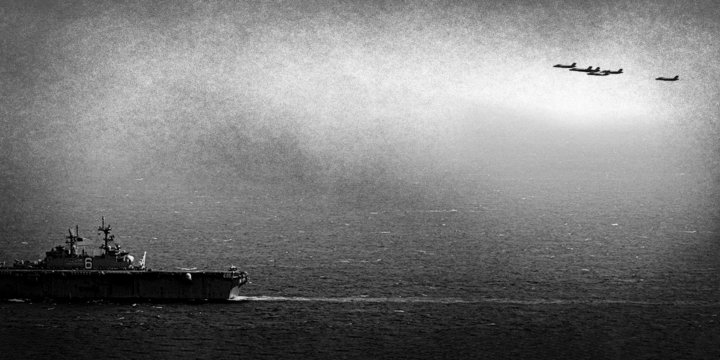Only the legislative branch has the constitutional authority to declare war
- War is sometimes necessary. As a costly, blunt instrument, however, the U.S. should wage war only as a last resort to defend its vital interests—and only with congressional authorization.
- Checks and balances between the legislative and executive branches allow the U.S. government to defend against security threats while also preserving Americans’ domestic liberties.
- Article I, Section 8 of the U.S. Constitution reserves the power to declare war to the legislative branch, the body most directly accountable to the American people. This, by design, makes wars more difficult to start and results in more thoughtful policies.
- As James Madison argued, the executive branch is “the branch of power most interested in war, and most prone to it.”1“From James Madison to Thomas Jefferson, April 2, 1798,” Founders Online, National Archives, https://founders.archives.gov/documents/Madison/01-17-02-0070. [Original source: The Papers of James Madison, vol. 17, March 31, 1797–March 3, 1801 and supplement January 22, 1778–August 9, 1795, ed. David B. Mattern, J. C. A. Stagg, Jeanne K. Cross, and Susan Holbrook Perdue, (Charlottesville: University Press of Virginia, 1991): 104–105.] The framers believed the president needed flexibility to repel sudden attacks, but other military action should require the consent of Congress.2“Article 1, Section 8, Clause 11,” The Founders’ Constitution, eds. Philip B. Kurland and Ralph Lerner, University of Chicago, http://press-pubs.uchicago.edu/founders/documents/a1_8_11s4.html.
- War powers today, however, do not reflect that wisdom. Congressional abdication has eroded the Constitution’s checks and balances. Presidents have started and continued with wars without authority.
The War Powers Resolution of 1973 is often misinterpreted
- In the wake of the Vietnam War, Congress passed the 1973 War Powers Resolution (WPR), over presidential veto, to reinforce its constitutional authority under Article I.3“Joint Resolution concerning war powers of congress and the president,” Public Law 93–148, November 7, 1973, https://www.govinfo.gov/content/pkg/STATUTE-87/pdf/STATUTE-87-Pg555.pdf.
- The WPR was designed to (1) provide elected representatives with the information needed to conduct proper oversight of wars and (2) ensure war-making was not conducted in secret.
- The WPR requires the president to consult Congress before introducing U.S. armed forces into hostilities. “Consultation” goes beyond merely informing lawmakers of a decision after the fact.4“War Powers Resolution of 1973,” House Committee on Foreign Affairs Report, June 15, 1973, 6–7, https://www.fordlibrarymuseum.gov/library/document/0019/4520942.pdf.
- In keeping with the Constitution, the law allows the executive branch to use force to defend the nation from an actual or imminent attack, but it reinforces the need for congressional authorization and adds specific reporting requirements and deadlines.
- However, presidents have misinterpreted the WPR and argued broad and near-limitless claims of self-defense and defense of the national interest, violating the system of checks and balances.5Tess Bridgeman, “Trump’s war powers legacy and questions for Biden,” Just Security, February 23, 2021, https://www.justsecurity.org/74903/trumps-war-powers-legacy-and-questions-for-biden/.
Executive overreach on war is a danger to the republic
- Open-ended congressional authorizations for use of military force (AUMFs) (1) enable executive overreach to make war outside the originally envisioned circumstance and (2) undermine Congress in its important oversight role.
- Examples of unilateral war-making include: the invasion of Panama (1989), airstrikes in Iraq (1993, 1996, 1998), the campaign in Kosovo (1999), and airstrikes in Syria (2017, 2018, 2021).6“The War Powers Resolution: concepts and practice,” Congressional Research Service, March 8, 2019, https://fas.org/sgp/crs/natsec/R42699.pdf.
- The 2011 U.S. military intervention in Libya is a clear example executive overreach. To avoid the WPR, the Obama administration claimed bombing operations were of such limited scope, duration, and risk that they did not constitute a “war.”7“Authority to use military force in Libya: memorandum opinion for the attorney general,” Office of Legal Counsel, April 1, 2011, 12–13, https://www.justice.gov/file/18376/download.
- The 2001 AUMF to target Al-Qaeda and the Taliban after 9/11 has been invoked to justify operations at least 41 times across 19 countries.8Matthew Weed, “Presidential References to the 2001 Authorization for Use of Military Force in Publicly Available Executive Actions and Reports to Congress,” Congressional Research Service, February 16, 2018, https://fas.org/sgp/crs/natsec/pres-aumf.pdf.
- The 2002 AUMF to target the Iraqi government of Saddam Hussein was used to justify the strike against IRGC Gen. Qassem Soleimani over 17 years later.9“Notice on the legal and policy frameworks guiding the United States’ use of military force and related national security operations,” U.S. House of Representatives Committee on Foreign Affairs, February 14, 2020, https://foreignaffairs.house.gov/_cache/files/4/3/4362ca46-3a7d-43e8-a3ec-be0245705722/6E1A0F30F9204E380A7AD0C84EC572EC.doc148.pdf.
The global reach of AUMF-contrived U.S. counterterrorism operations
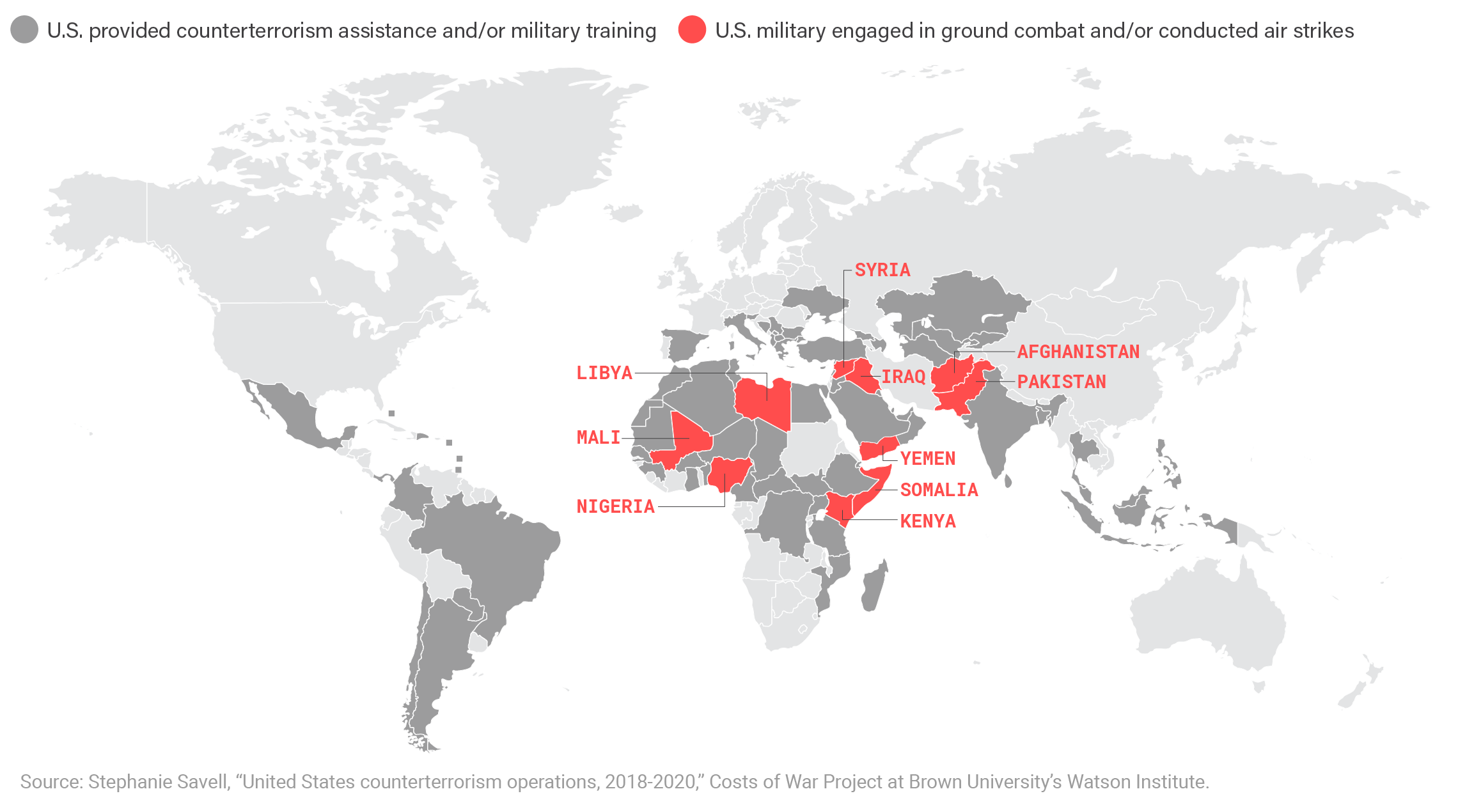
Open-ended, post-9/11 AUMFs, originally passed to go to war in Afghanistan and Iraq, have been cited to justify a nearly two-decade global war on terror: ground combat and/or airstrikes in at least 10 countries and counterterrorism aid and training in dozens of countries.
Keys to restoring the constitutional balance on war powers
- History demonstrates the executive branch rarely limits its own power. Courts avoid resolving matters of war powers. Only Congress can reclaim its constitutional authority in conducting U.S. foreign policy.
- Constitutional AUMFs/war declarations must include three elements: a (1) reauthorization requirement (or sunset clause); (2) clearly defined enemy, including geographic restrictions; and (3) reporting requirement to ensure transparency and accountability.
- Each element reinforces the proper balance of power in war-making and serves to keep Congress in control of wars, aid proper oversight of the executive branch, avoid endless war, and provide transparency and accountability to the American people.
- The term “hostilities” in the WPR could be clarified to include all U.S. operations that may result in the use of deadly force. Forty-eight-hour reports to Congress could be made immediately available to the public.
- Congress has the power of the purse—it can exercise its authority to remove authorizations/funding for ongoing wars to end them.
- Voting on war is the most important job of Congress. U.S. servicemembers should not have to risk their lives while Congress evades the political risk of doing its job.
Endnotes
- 1“From James Madison to Thomas Jefferson, April 2, 1798,” Founders Online, National Archives, https://founders.archives.gov/documents/Madison/01-17-02-0070. [Original source: The Papers of James Madison, vol. 17, March 31, 1797–March 3, 1801 and supplement January 22, 1778–August 9, 1795, ed. David B. Mattern, J. C. A. Stagg, Jeanne K. Cross, and Susan Holbrook Perdue, (Charlottesville: University Press of Virginia, 1991): 104–105.]
- 2“Article 1, Section 8, Clause 11,” The Founders’ Constitution, eds. Philip B. Kurland and Ralph Lerner, University of Chicago, http://press-pubs.uchicago.edu/founders/documents/a1_8_11s4.html.
- 3“Joint Resolution concerning war powers of congress and the president,” Public Law 93–148, November 7, 1973, https://www.govinfo.gov/content/pkg/STATUTE-87/pdf/STATUTE-87-Pg555.pdf.
- 4“War Powers Resolution of 1973,” House Committee on Foreign Affairs Report, June 15, 1973, 6–7, https://www.fordlibrarymuseum.gov/library/document/0019/4520942.pdf.
- 5Tess Bridgeman, “Trump’s war powers legacy and questions for Biden,” Just Security, February 23, 2021, https://www.justsecurity.org/74903/trumps-war-powers-legacy-and-questions-for-biden/.
- 6“The War Powers Resolution: concepts and practice,” Congressional Research Service, March 8, 2019, https://fas.org/sgp/crs/natsec/R42699.pdf.
- 7“Authority to use military force in Libya: memorandum opinion for the attorney general,” Office of Legal Counsel, April 1, 2011, 12–13, https://www.justice.gov/file/18376/download.
- 8Matthew Weed, “Presidential References to the 2001 Authorization for Use of Military Force in Publicly Available Executive Actions and Reports to Congress,” Congressional Research Service, February 16, 2018, https://fas.org/sgp/crs/natsec/pres-aumf.pdf.
- 9“Notice on the legal and policy frameworks guiding the United States’ use of military force and related national security operations,” U.S. House of Representatives Committee on Foreign Affairs, February 14, 2020, https://foreignaffairs.house.gov/_cache/files/4/3/4362ca46-3a7d-43e8-a3ec-be0245705722/6E1A0F30F9204E380A7AD0C84EC572EC.doc148.pdf.
Author

Daniel
DePetris
Fellow
Events on Grand strategy
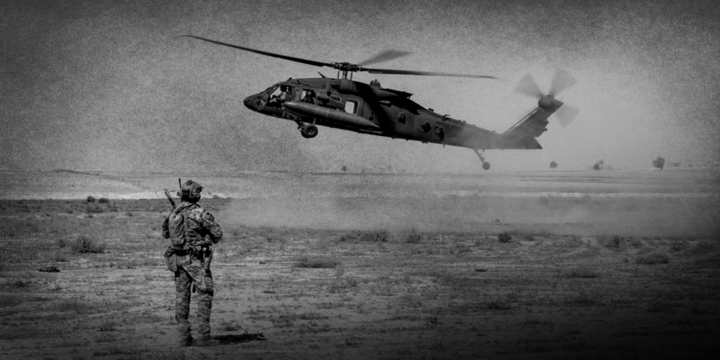
virtualSyria, Balance of power, Basing and force posture, Counterterrorism, Middle East, Military analysis
February 21, 2025
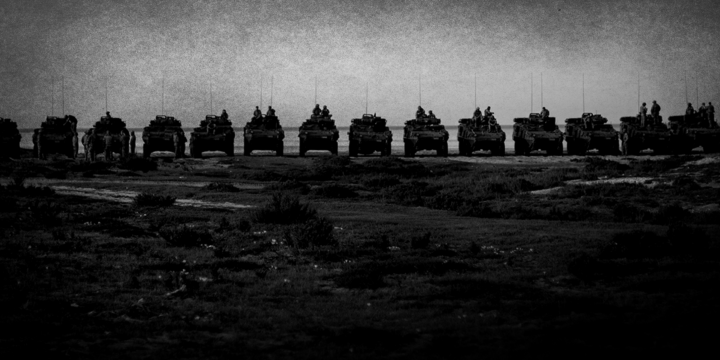
virtualGrand strategy, Basing and force posture, Burden sharing, Global posture, Military analysis
October 31, 2024
